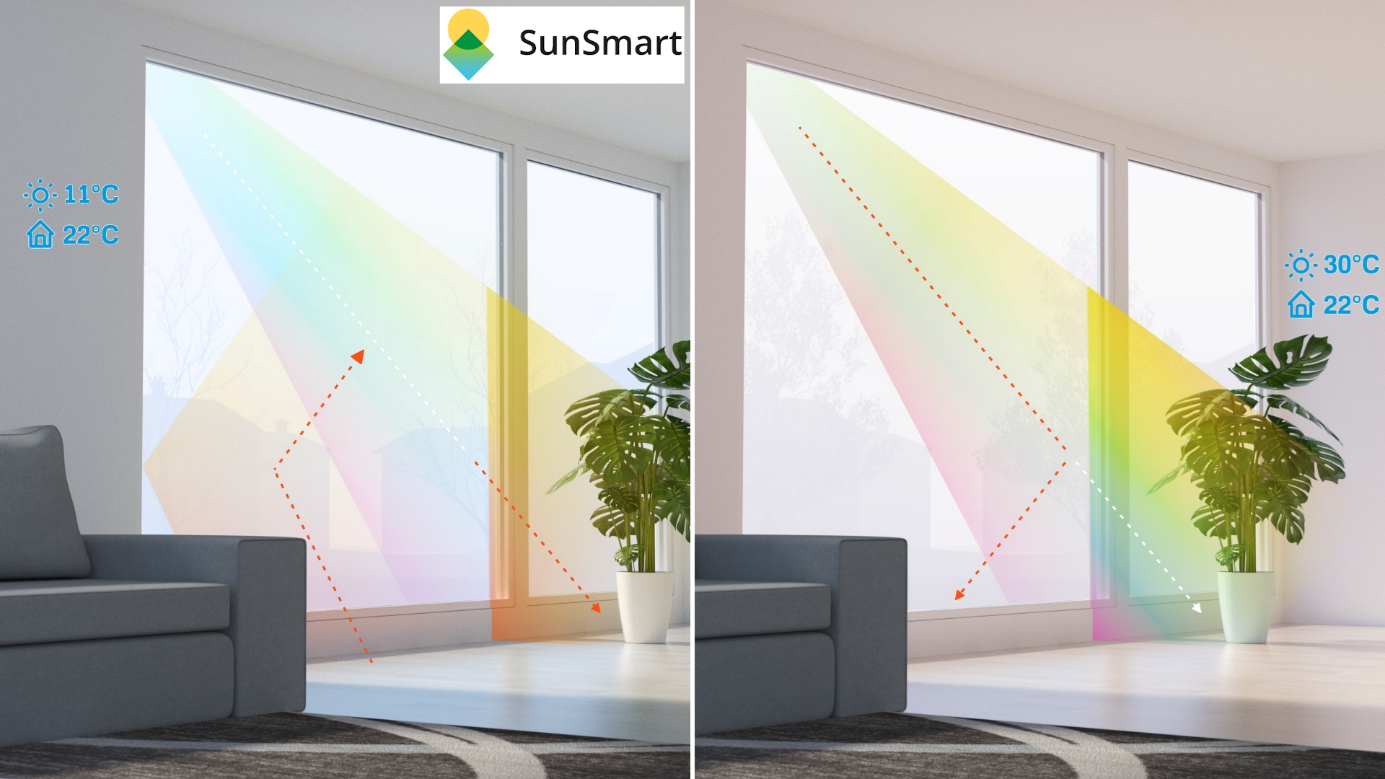
Smart window with large energy savings potential shows promising results during first pilot field test
A ’smart window’ developed by TNO and partners in the Interreg project Sunovate, performs successfully in real world conditions according to preliminary pilot results. The window is designed to automatically switch between blocking heat from the sun and letting it pass. It is optimized to reduce energy consumption in moderate climates with cold winters and warm summers, such as in the Netherlands.
Preliminary results first pilot field test
The results show that the smart window transitions from an infrared transparent to blocking state as soon as direct sunlight hits the window and ambient temperatures are above 20°C. The transition back to the infrared transparent state usually happens over night when the glass surface cools down. This ensures an optimized use of solar heat leading to reduced energy demand for heating and cooling simultaneously. This can lead to additional energy and cost savings of up to 8% and 23.70 €/m2 glass per year when compared to state of the art HR++ windows.

TNO and partners started pilot testing this new SunSmart technology in January to gather information on the adaptive properties and performance of the innovative energy efficient window in real environment. Two 1 m2 sized smart window demonstrators were recently produced and implemented at the SolarBEAT test facilities in Eindhoven. This is the first time that the adaptive thermochromic effect of the new smart windows has been demonstrated in real world conditions and so far the results are promising. TNO will further monitor the window demonstrators until the end of this year, to obtain information on the switching performance during all four seasons.
’Smart window’ technology
The active material in the smart window is thermochromic, that means it changes its optical properties at a specific temperature. TNO and its partners have designed the material for high visible transparency, a switching temperature around 20°C and to only change transparency in the infrared. Therefore, the window is optimized for highest energy savings, whilst staying completely transparent to the human eye. The switch happens autonomously and is intrinsic to the laminated glass, so that the window can be installed in regular frames without special installation requirements.
Impact
The effective use of sunlight and solar heat can have a major impact on the energy efficiency of buildings, as it reduces heating demand in winter and cooling demand in summer. The new ’smart window’ automatically adapts its solar heat gain to seasonal changes. The technology is designed using low cost materials and processes to realize a return on investment within 7 years for end users. By further advancing this technology to market introduction within the next 2-3 years, it’s possible to make a big contribution to achieving the European energy and climate targets. With the ultimate goal of an energy and climate neutral built environment by 2050.
Partners
The test is part of the Interreg Sunovate project. Sunovate is a project of TNO, Brightlands Materials Center and Solliance, Hasselt University, imec, KU Leuven, Yparex, Everlam, Glass for Glass and Soltech. The project was initiated by TNO. Sunovate is funded by the Interreg VL-NL program, the Dutch government and the provinces of Limburg (NL / VL) and Noord-Brabant (NL).
